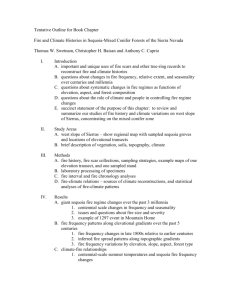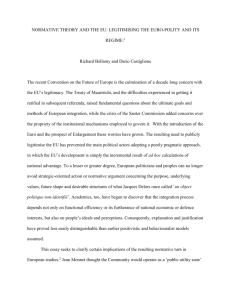POLITICAL SCIENCE 1010 - LECTURE NOTES
advertisement
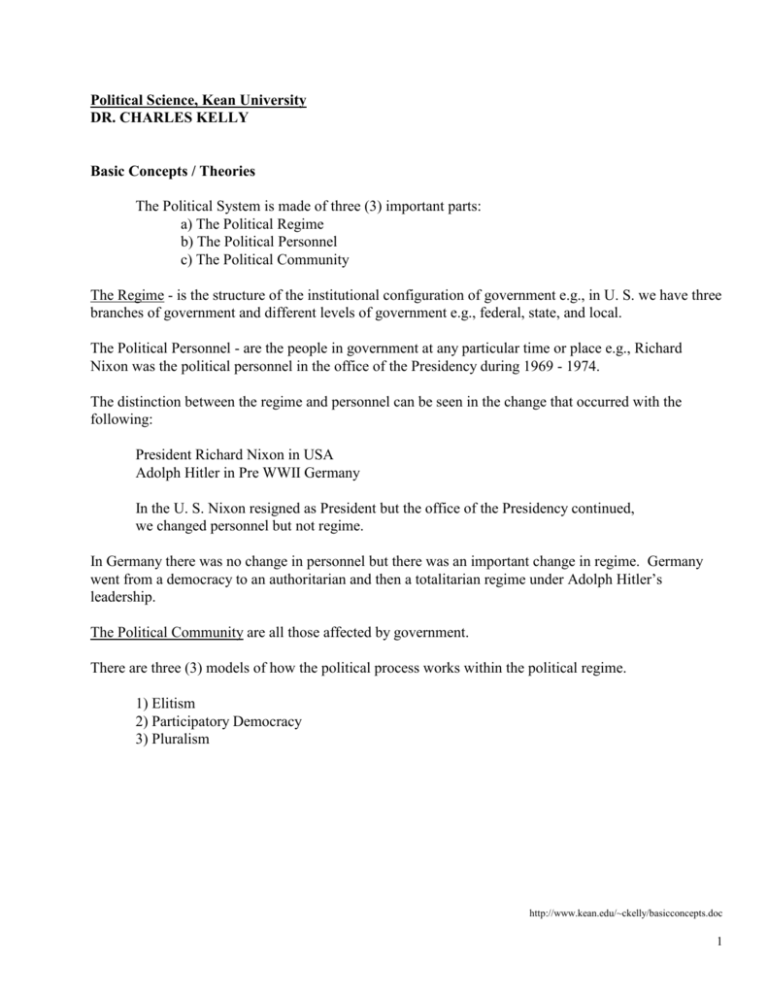
Political Science, Kean University DR. CHARLES KELLY Basic Concepts / Theories The Political System is made of three (3) important parts: a) The Political Regime b) The Political Personnel c) The Political Community The Regime - is the structure of the institutional configuration of government e.g., in U. S. we have three branches of government and different levels of government e.g., federal, state, and local. The Political Personnel - are the people in government at any particular time or place e.g., Richard Nixon was the political personnel in the office of the Presidency during 1969 - 1974. The distinction between the regime and personnel can be seen in the change that occurred with the following: President Richard Nixon in USA Adolph Hitler in Pre WWII Germany In the U. S. Nixon resigned as President but the office of the Presidency continued, we changed personnel but not regime. In Germany there was no change in personnel but there was an important change in regime. Germany went from a democracy to an authoritarian and then a totalitarian regime under Adolph Hitler’s leadership. The Political Community are all those affected by government. There are three (3) models of how the political process works within the political regime. 1) Elitism 2) Participatory Democracy 3) Pluralism http://www.kean.edu/~ckelly/basicconcepts.doc 1 Elitism maintains society is hierarchically organized with a few deciding and the many following. Elitism makes no claim of being democratic. There are two (2) variations of elitism: 1) One school of thought maintains that elitism is natural and can be beneficial for society e.g., Plato’s Republic wise philosopher-kings will rule for the betterment of society. 2) Another school of thought maintains that elitism is inevitable to do human nature, bureaucracy, or the economic system. This school maintains that elitism is an exploitative type of system, where the rulers exploit the ruled e.g., Marx maintain that in Feudalism and Capitalism the rulers ruled in their own interest at the expense of the many. (See Chart I) Participatory Democracy maintains that in order for the political system to be truly democratic, society has to be democratized, i.e., all structure in society, family, job, church, etc. have to abandon their hierarchical structure and become democratic. In order to appreciate what the proponents of participatory democracy are saying it is useful to view democracy on a continuum ranging from pure totalitarianism to pure democracy. ABSOLUTE Reality ABSOLUTE Totalitarianism------------------------------------------------------------Pure Democracy e.g. George Orwell’s Somewhere in between Equal Influence 1984 for all Proponents of Participatory Democracy wants to break down the hierarchical structure and move toward collective decision-making where the many are deciding their own fate. Some proponents of Participatory Democracy concede that it is impractical to achieve absolute equality of influence but nonetheless that should be the goal of society e.g. Marx’s Communist Utopia. Pluralism maintains that the political system is hierarchically structured, i.e., there are a few deciding and many follows. Despite this fact, pluralism maintains democracy is possible, i.e., the many can make the few responsive, accountable and accessible. The way this is done is as follows: 1) No one group in society has a monopoly of power. 2) In order to make governmental policy coalitions of groups have to be formed and groups in society are pragmatic enough to work out compromises. 3) There is a basic consensus w/n society that rules out violence as a legitimate way to resolve group conflict. a) this consensus also involves a widespread agreement on a mechanism for making decisions., b) this mechanism is considered legitimate i.e., the losers are willing to comply with the decision of the winners. c) another requirement is that the winners permit the losers to criticize and challenge the winners’ decision. See figure-1, Pluralism.gif 2 3 A Pluralist democracy is characterized by competition by power by organized groups. The unorganized have little or no power in the political system. Political Regime - regardless of the type of regime all regimes seek legitimacy. Legitimacy is the tacit or explicit support of the regime by its people. Usually it is an emotional identification with the regime. The regime is legitimate when the people believe that institutional structures of the government are the most appropriate for society. There are various sources of legitimacy. Max Weber speaks of three (3) ideal types of legitimacy: 1) Traditional - people support the regime out of habit and custom. 2) Rational legal - people support the regime because the explicit rules and procedures of government make sense to the people--the people prefer on rational grounds the rule of law over other types of rule. 3) Charismatic - people support the regime because of an emotional identification with the personality of the leader of the regime. According to Weber we find mixes of the three (3) types of legitimacy in every society but it is possible to categorize regime by the dominant source of legitimacy. (See Chart II) Political Culture - In order to understand legitimacy it is important to comprehend the political culture of society. Political culture is the values, beliefs, attitudes and aspirations of the people in society which orient them politically. In order for a regime to be legitimate there has to be widespread agreement in society on certain sets of values i.e., some sort of a consensus. Ideology is an explicit set of values that orients people in society in terms of what they can expect from government and what government should do for them and society. It speaks to human nature, the role of government in society and the relationship of politics and economics. It also advances the economic interests of a social class in society. The three (3) main ideologies of politics are Conservatism, Liberalism and socialism. There are many variations of the ideologies i.e., fascism, Nazism, communism, populism, etc., but they all can be traced back to one or more of three. (See Chart III) 4 POLITICAL SCIENCE LECTURE NOTES DR. CHARLES KELLY CHART I MARX’S THEORY OF HISTORY – ECONOMIC DETERMINISM Stages of History Environment Societal Relationships Territorial Political Units Classes Source of Legitimacy Economic System Primitive Communism Abundance Harmony None None None None Feudalism Scarcity Conflict City-state Noble vs. Peasants Religion Agrarian Capitalism Less Scarcity Conflict Nation-state Bourgeoisie vs. Proletariat Nationalism Industrial Socialism Least Scarcity Conflict Regional Camps Proletariat vs. Bourgeoisie Working-class Consciousness Highly Industrialized Communism Sufficiency Harmony Global Society None Equality Nearly Automated 5 CHART II WEBER’S TYPOLOGY OF DIFFERENT POLITICAL REGIMES (THE TYPE OF REGIME LEGITIMACY INFLUENCES POLITICAL STABILITY) TYPES OF LEGITIMACY PROBLEM I PROBLEM II POLITICAL STABILITY Dealing with Transfer of Power Dealing with the Phenomenon of Change (Dealing with Problems I & II) Less Stable CHARISMATIC Deals Poorly Deals Well (Regime accepted by the People because of the personality of its leader) (Cannot Transfer Personality of Leader) (Can Muster Necessary Political will TRADITIONAL Deals Well Deals Poorly (Regime accepted because it based on tradition and custom) (e.g., law of primogeniture) (Can not break with Tradition RATIONAL - LEGAL Deals Well Deals Well (Regime accepted because procedures are perceived logical and reasonable) (Elections, explicit line of succession) (Legislation, Amendments and judicial review) Less Stable Most Stable 6 CHART III MAJOR IDEOLOGIES Class Constituency Historical Origins Conservatism Nobility 18th Century Mercantilism Paternalistic (Strong Government) Liberalism Middle Class 19th Century Capitalism Laissez Faire (Weak Government) Socialism Working Class 20th Century Centrally Owned and Planned Economy Interventionist (Strong Government Economic System Role of Government Nature of Man Anti-Social Social Malleable Source of Power Land Commerce Numbers & Organizations Dr. Charles P. Kelly http://www.kean.edu/~ckelly/basicconcepts.doc (ms-word/97 ) ----- End ----- 7


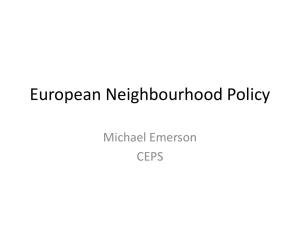
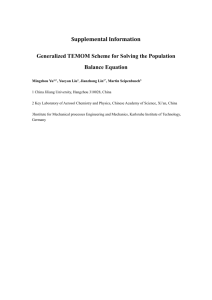

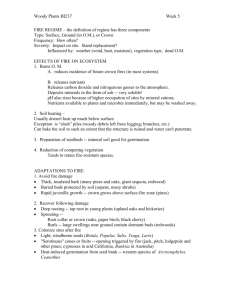
![Understanding barriers to transition in the MLP [PPT 1.19MB]](http://s2.studylib.net/store/data/005544558_1-6334f4f216c9ca191524b6f6ed43b6e2-300x300.png)

